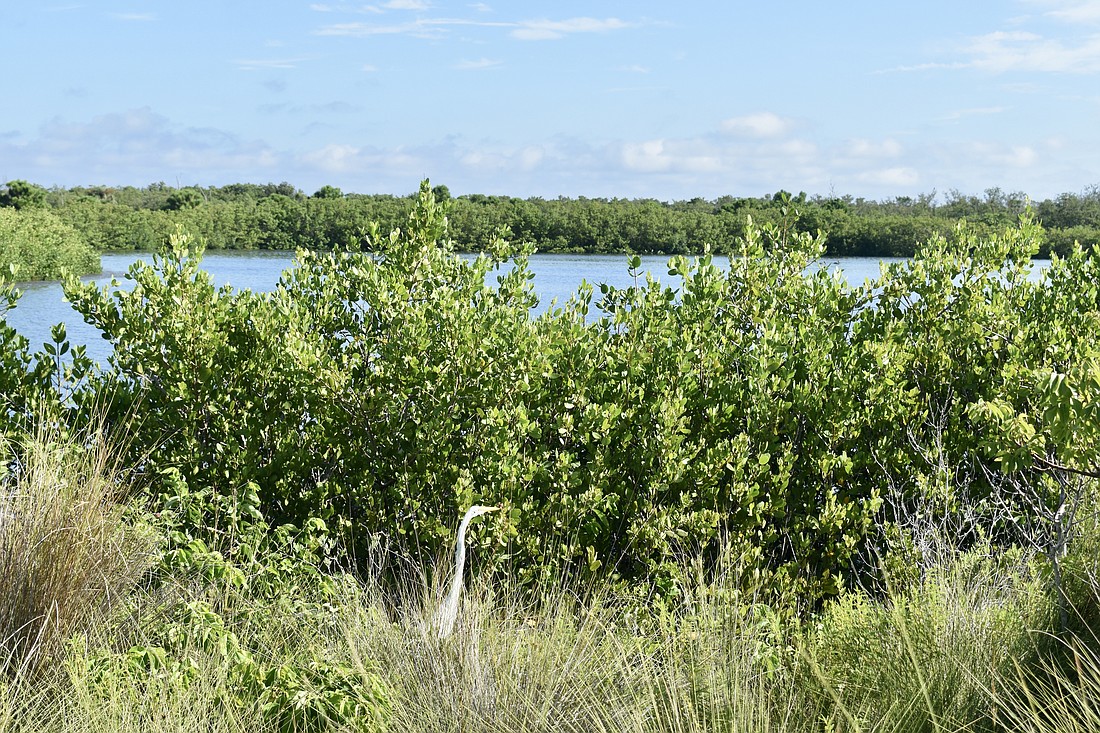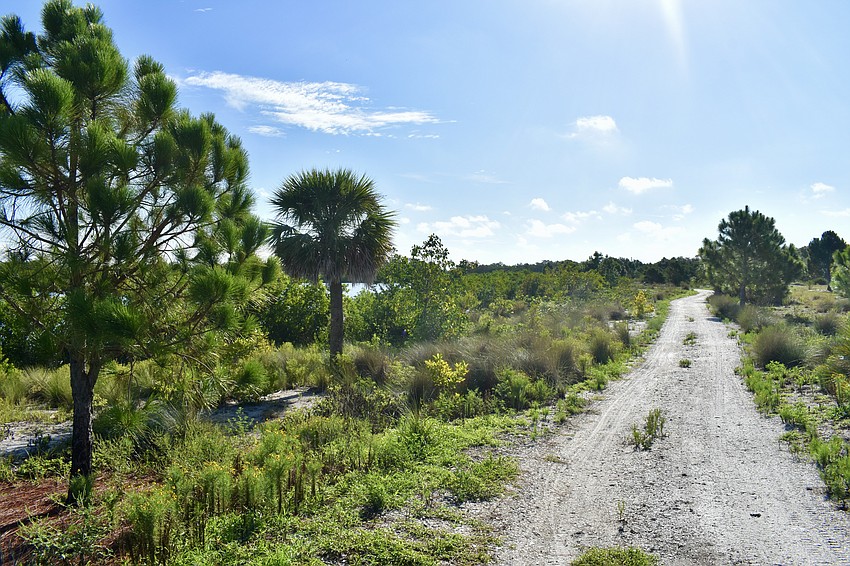- November 13, 2025
-
-
Loading

Loading

A week after Manatee County commissioners voted 6-1 to reduce wetland protections, the environment was back in the discussion Aug. 22 as commissioners heard a plan to establish a county wetland mitigation program.
Commissioner Jason Bearden called it a “no brainer,” and the program, which establishes a mitigation bank of land within Manatee County, passed with unanimous approval. Commissioners say the program is intended to save money, support the Capital Improvement Plan and keep restored wetlands within Manatee County.
Longboat Key resident Rusty Chinnis called the program “damage control,” by the commissioners. Chinnis attended the Aug. 17 land use meeting, where members of the public packed the chambers attempting to stop a transmission to the state legislature that would cut additional wetland protections out of the Comprehensive Plan.
If approved in October, county wetland buffers that currently must be between 30 and 50 feet will only need to meet the state standard of 15 feet.
The move caught the attention of Vote Water, a grassroots organization with a mission “to fight political corruption in Florida by galvanizing public resolve to end the systemic pollution and mismanagement of our waterways.”
Based out of Stuart, the organization doesn’t normally pay attention to what’s happening on the opposite coast in Manatee County.
“This caught our eye because it’s such a classic example of what we talk about. Florida’s water problem is a political problem,” Executive Director Gil Smart said. “Unfortunately, a lot of county commissioners and elected officials spend a lot of time listening to the special interests and not enough time listening to what the citizens have to say.”
The bank, in this case, isn’t a financial institution, but parcels of land to be used as compensation for wetland impacts. Commissioner Mike Rahn said the county establishing its own mitigation bank will save taxpayers millions and keep replenished land within the county.
“This is so important for our county right now, to control our destiny on our mitigation credits,” Rahn said. “If we go outside and buy credits in HIllsborough County, that’s Manatee County taxpayer money staying in Hillsborough County, not coming back here and doing the things we need to do with it.”
Mitigation has to be performed within the watershed, not the county buying the credits. There are six watersheds in Manatee County, shared with neighboring counties.
If the county wants to build a road, the project has to go through state and federal permitting to determine how many mitigation credits are needed to compensate for the impacted area. One mitigation credit is equal to one restored acre of wetlands.
“If Manatee County were to establish a mitigation bank, we could set credit pricing and better manage and control costs and schedules for county infrastructure development,” Ecological and Marine Resources Manager Sherri Swanson said.
The county recently signed off on the purchase of just under one-third of a credit to widen Upper Manatee River Road from two lanes to four lanes from north of State Road 64 to the Fort Hamer Bridge. Based on the price of $210,000 per credit, the cost was $65,100. That money must be put into wetland restoration or improvements within the watershed.
Mitigation banks can be owned by public or private entities. Credits fluctuate with the market and, sometimes, sell out. Without its own mitigation bank, the county is left to the open market, competing with other municipalities and private developers.
Having to buy credits from an outside source can also cause delays. Improvements to Moccasin Wallow Road were stalled because mitigation credits were sold out at the time. The county had to find land before proceeding with construction.
County staff ran an estimate on how many credits are needed to complete the transportation component of the Capital Improvement Plan. The estimate is 73 credits, which equates to $15.3 million.
Natural Resources Director Charlie Hunsicker wasn’t comfortable talking numbers on a program that’s a year and a half away from fruition. But if the county can adjust the price of a credit, even rounding down to $200,000 per credit could save nearly a million dollars.
In this case, it will cost money to save money. Upfront costs include land acquisition and four additional staff members: Environmental Program Manager, Ecological Resources Coordinator, Environmental Specialist and Fiscal Analyst.
Staff has identified 23,558 acres of eligible land, of which 21,253 acres are located in Duette.
Commissioners agreed they couldn’t find a downside to the program, and they said Perico Preserve is a shining example of what citizens stand to gain. The county acquired a piece of worn out farmland and transformed it into a bird sanctuary with hiking and biking trails for residents to enjoy.
But does replacing something make up for the original loss of wetlands? When it comes to wetlands, Smart and others say, “Not necessarily.”
“It’s an engineering solution,” East County resident Elise Evans said.

Abbey Tyrna, executive director of Suncoast Waterkeeper, expressed the same skepticism at the land use meeting. She stated that it didn’t make sense to try to engineer solutions rather than to work with the naturally occurring systems.
“Mitigation programs can work, but they are about allowing land to be developed that otherwise wouldn’t be developed,” Smart said. “You’re developing land over here, and you’re saving some over there.”
In 2019, Governor Ron DeSantis signed a bill that provides an exception to provisions set in 2012 that prohibited a governmental entity from creating or providing mitigation for a project other than its own on land that was bought for conservation purposes.
The law allows a double dip of sorts, where developers are now able to start refurbishing land that was already bought and earmarked for conservation anyway. Prior to the bill, the land would’ve needed to be purchased for development and then turned into conservation if it wasn’t a government project.
Only time will tell, if or how the developing program stands to benefit developers. But one thing is for certain, with or without the program, Manatee County conservation projects are already in the works.
“We’re looking at buying 735 acres between Fort Hamer and Twin Rivers. We gave ELMAC (Environmental Lands Management and Acquisition) the okay to start putting it together, plus another 69 acres that’s called Crooked Creek Ranch,” Rahn said. “We’re very excited to put that property together and preserve it for the citizens of Manatee County.”
The property runs along the Manatee River and has multiple property owners. While Rahn likened it to pieces of a puzzle that have to come together, he said it has the potential to be Robinson Preserve 2.0.
“Citizens don’t always see the things we’re doing for the environment, and some things get sensationalized because they think it’s giving developers an upper hand, but that’s not true,” Rahn said. “This is a very conservative board, but it’s doing more for the environment, I think, than any other board before us.”